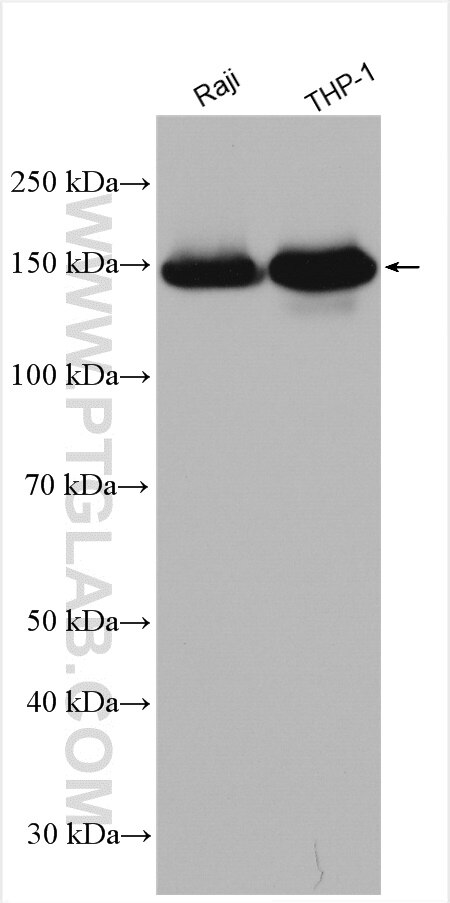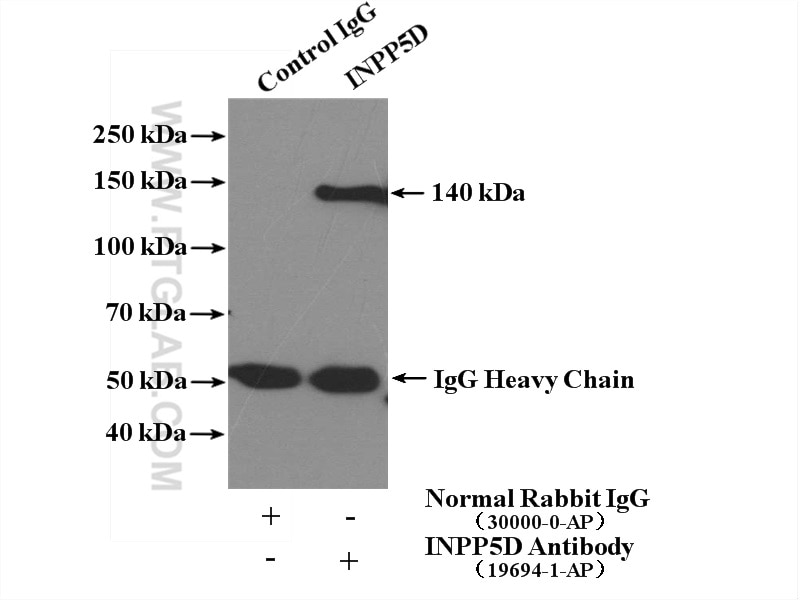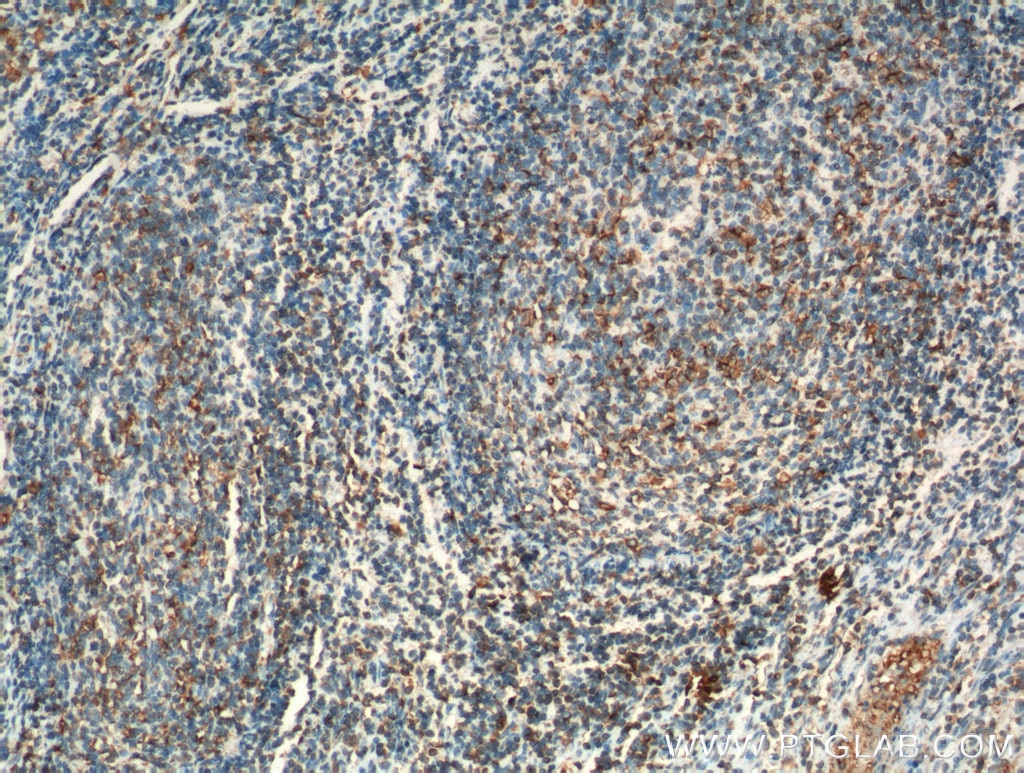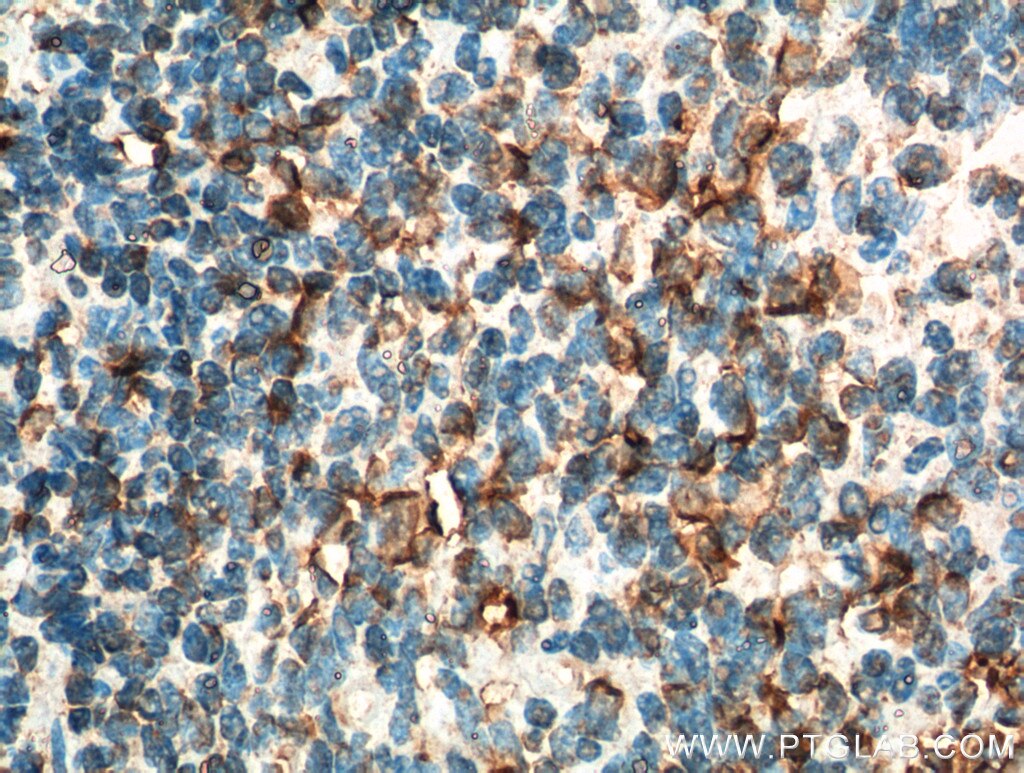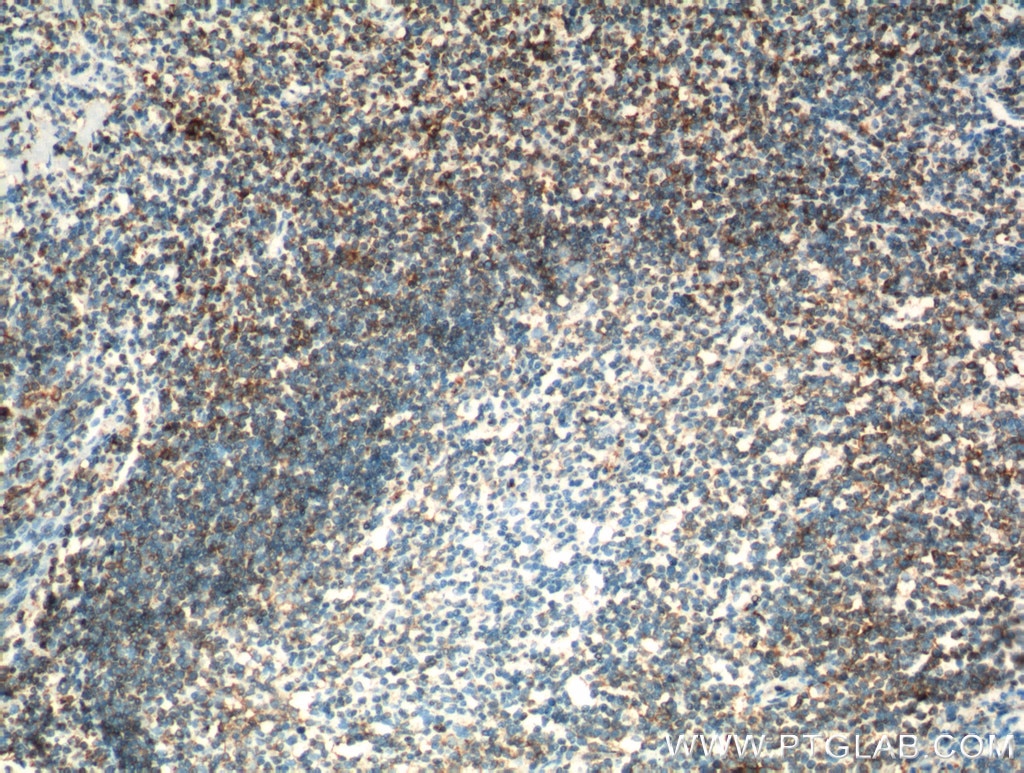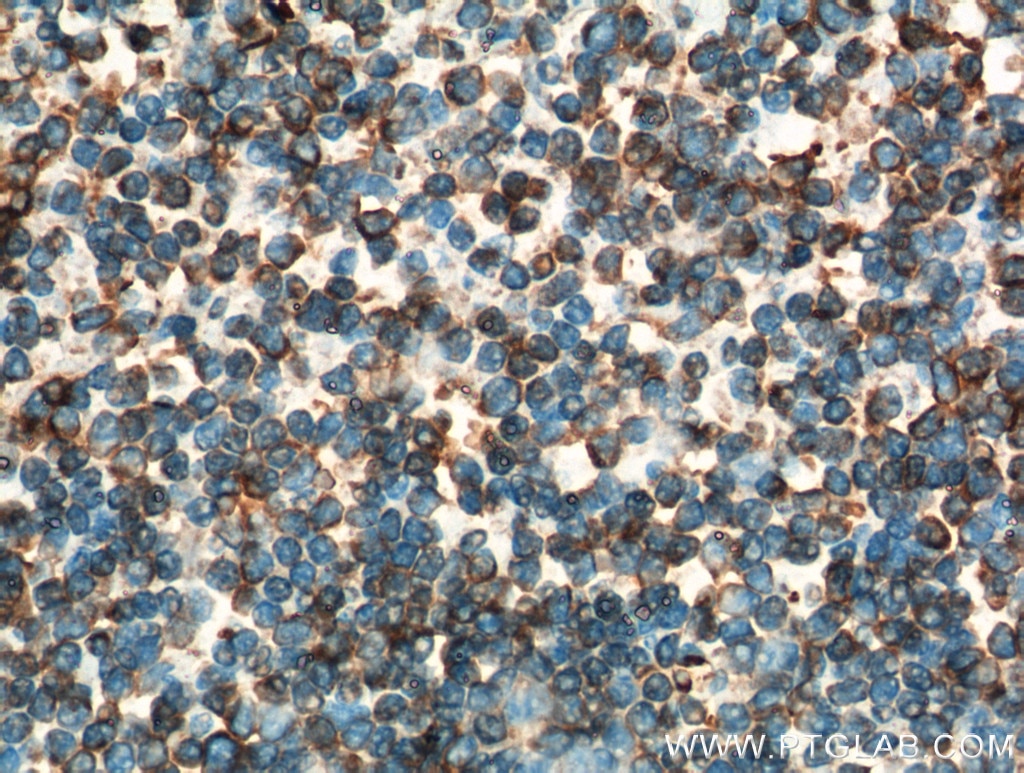Anticorps Polyclonal de lapin anti-INPP5D
INPP5D Polyclonal Antibody for WB, IP, IHC, ELISA
Hôte / Isotype
Lapin / IgG
Réactivité testée
Humain, rat, souris
Applications
WB, IHC, IP, ELISA
Conjugaison
Non conjugué
N° de cat : 19694-1-AP
Synonymes
Galerie de données de validation
Applications testées
| Résultats positifs en WB | cellules Daudi, cellules Raji, cellules Ramos, cellules THP-1 |
| Résultats positifs en IP | cellules Ramos, |
| Résultats positifs en IHC | tissu d'amygdalite humain, il est suggéré de démasquer l'antigène avec un tampon de TE buffer pH 9.0; (*) À défaut, 'le démasquage de l'antigène peut être 'effectué avec un tampon citrate pH 6,0. |
Dilution recommandée
| Application | Dilution |
|---|---|
| Western Blot (WB) | WB : 1:2000-1:10000 |
| Immunoprécipitation (IP) | IP : 0.5-4.0 ug for 1.0-3.0 mg of total protein lysate |
| Immunohistochimie (IHC) | IHC : 1:100-1:400 |
| It is recommended that this reagent should be titrated in each testing system to obtain optimal results. | |
| Sample-dependent, check data in validation data gallery | |
Applications publiées
| WB | See 5 publications below |
| IHC | See 2 publications below |
Informations sur le produit
19694-1-AP cible INPP5D dans les applications de WB, IHC, IP, ELISA et montre une réactivité avec des échantillons Humain, rat, souris
| Réactivité | Humain, rat, souris |
| Réactivité citée | Humain, souris |
| Hôte / Isotype | Lapin / IgG |
| Clonalité | Polyclonal |
| Type | Anticorps |
| Immunogène | Peptide |
| Nom complet | inositol polyphosphate-5-phosphatase, 145kDa |
| Masse moléculaire calculée | 133 kDa |
| Poids moléculaire observé | 145 kDa |
| Numéro d’acquisition GenBank | NM_001017915 |
| Symbole du gène | INPP5D |
| Identification du gène (NCBI) | 3635 |
| Conjugaison | Non conjugué |
| Forme | Liquide |
| Méthode de purification | Purification par affinité contre l'antigène |
| Tampon de stockage | PBS with 0.02% sodium azide and 50% glycerol |
| Conditions de stockage | Stocker à -20°C. Stable pendant un an après l'expédition. L'aliquotage n'est pas nécessaire pour le stockage à -20oC Les 20ul contiennent 0,1% de BSA. |
Informations générales
INPP5D, also named as SHIP, SHIP1, SIP-145 and hp51CN, belongs to the inositol-1,4,5-trisphosphate 5-phosphatase family. INPP5D is phosphatidylinositol (PtdIns) phosphatase that specifically hydrolyzes the 5-phosphate of phosphatidylinositol-3,4,5-trisphosphate (PtdIns(3,4,5)P3) to produce PtdIns(3,4)P2, thereby negatively regulating the PI3K (phosphoinositide 3-kinase) pathways. INPP5D acts as a negative regulator of B-cell antigen receptor signaling. It mediates signaling from the FC-gamma-RIIB receptor (FCGR2B), playing a central role in terminating signal transduction from activating immune/hematopoietic cell receptor systems. INPP5D acts as a negative regulator of myeloid cell proliferation/survival and chemotaxis, mast cell degranulation, immune cells homeostasis, integrin alpha-IIb/beta-3 signaling in platelets and JNK signaling in B-cells. INPP5D regulates proliferation of osteoclast precursors, macrophage programming, phagocytosis and activation and is required for endotoxin tolerance. It is involved in the control of cell-cell junctions, CD32a signaling in neutrophils and modulation of EGF-induced phospholipase C activity. It is a key regulator of neutrophil migration, by governing the formation of the leading edge and polarization required for chemotaxis. It modulates FCGR3/CD16-mediated cytotoxicity in NK cells. It mediates the activin/TGF-beta-induced apoptosis through its Smad-dependent expression. INPP5D may also hydrolyze PtdIns(1,3,4,5)P4, and could thus affect the levels of the higher inositol polyphosphates like InsP6. This antibody is specific to INPP5D.
Protocole
| Product Specific Protocols | |
|---|---|
| WB protocol for INPP5D antibody 19694-1-AP | Download protocol |
| IHC protocol for INPP5D antibody 19694-1-AP | Download protocol |
| IP protocol for INPP5D antibody 19694-1-AP | Download protocol |
| Standard Protocols | |
|---|---|
| Click here to view our Standard Protocols |
Publications
| Species | Application | Title |
|---|---|---|
Acta Neuropathol Commun The presubiculum is preserved from neurodegenerative changes in Alzheimer's disease. | ||
Ecotoxicol Environ Saf Characterizing microglial heterogeneity in autophagy impairment of Paraquat-induced Parkinson's disease-like neurodegeneration | ||
J Immunol Systemic Lupus Erythematosus Immune Complexes Increase the Expression of SLAM Family Members CD319 (CRACC) and CD229 (LY-9) on Plasmacytoid Dendritic Cells and CD319 on CD56dim NK Cells. | ||
Eur J Immunol Monomer hapten and hapten-specific IgG inhibit mast cell activation evoked by multivalent hapten with different mechanisms. | ||
Immunol Cell Biol Mycobacterium tuberculosis Rv1987 protein induces M2 polarization of macrophages through activating the PI3K/Akt1/mTOR signaling pathway. | ||
Oncol Rep SHIP1 inhibits cell growth, migration, and invasion in non‑small cell lung cancer through the PI3K/AKT pathway. |
